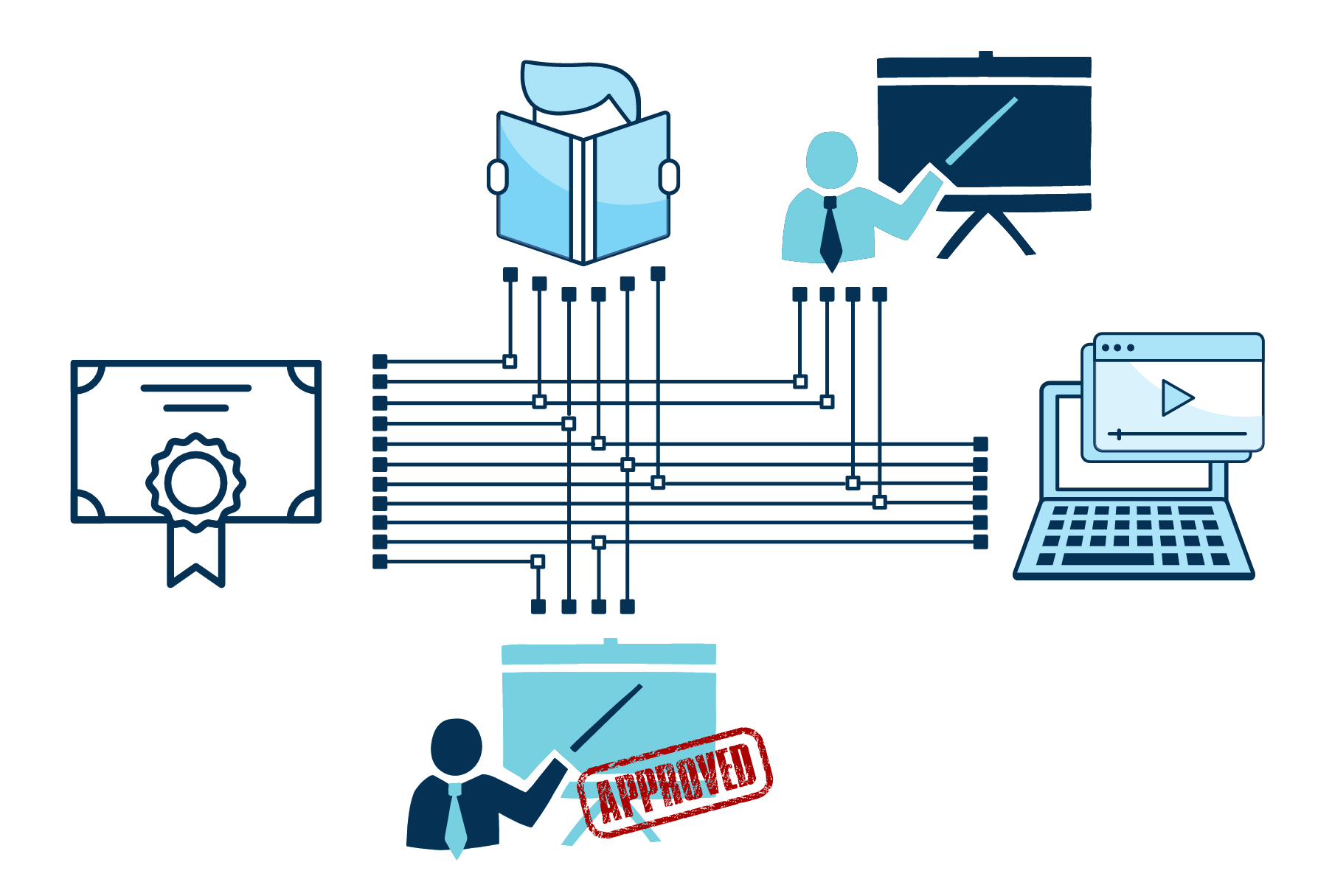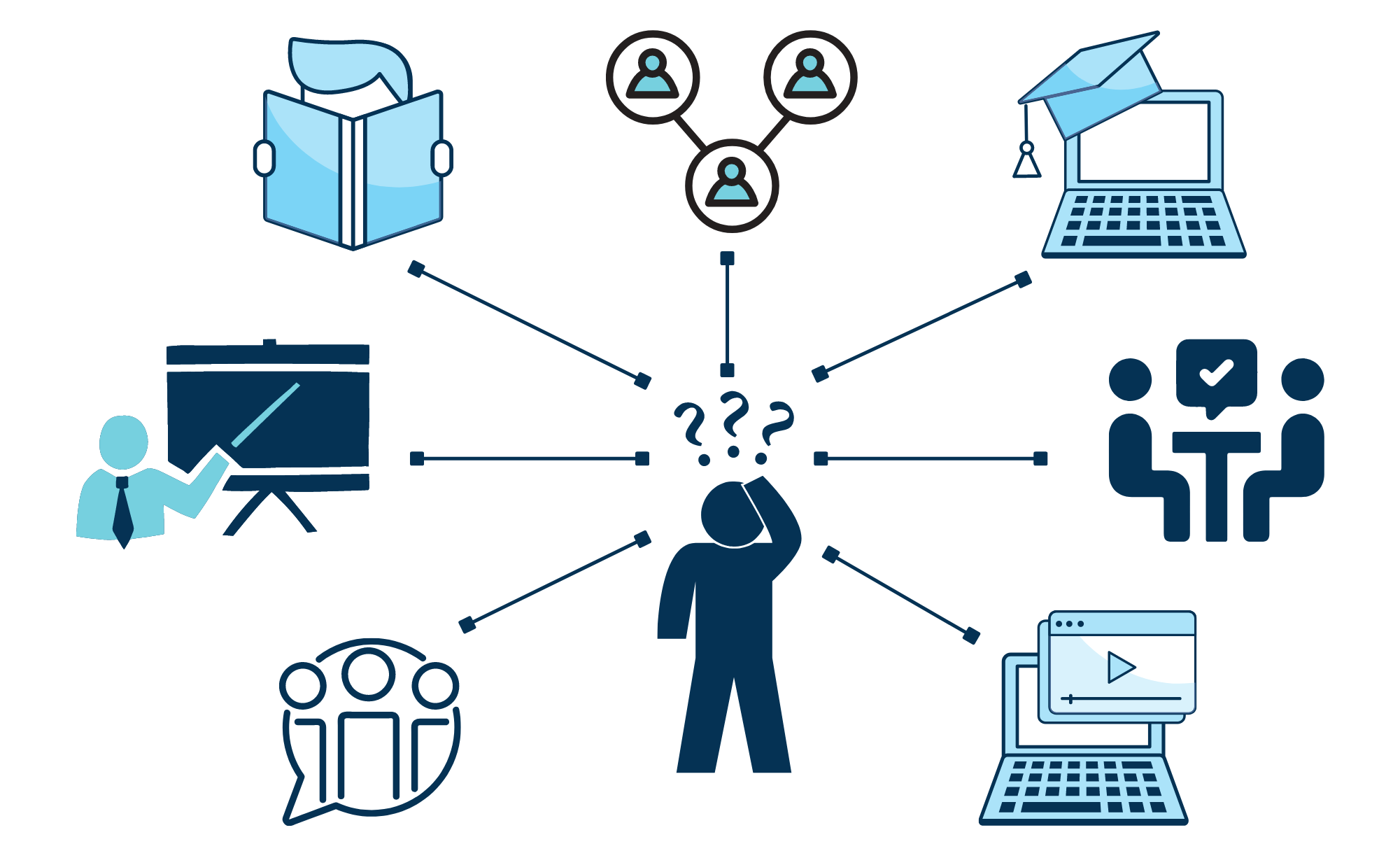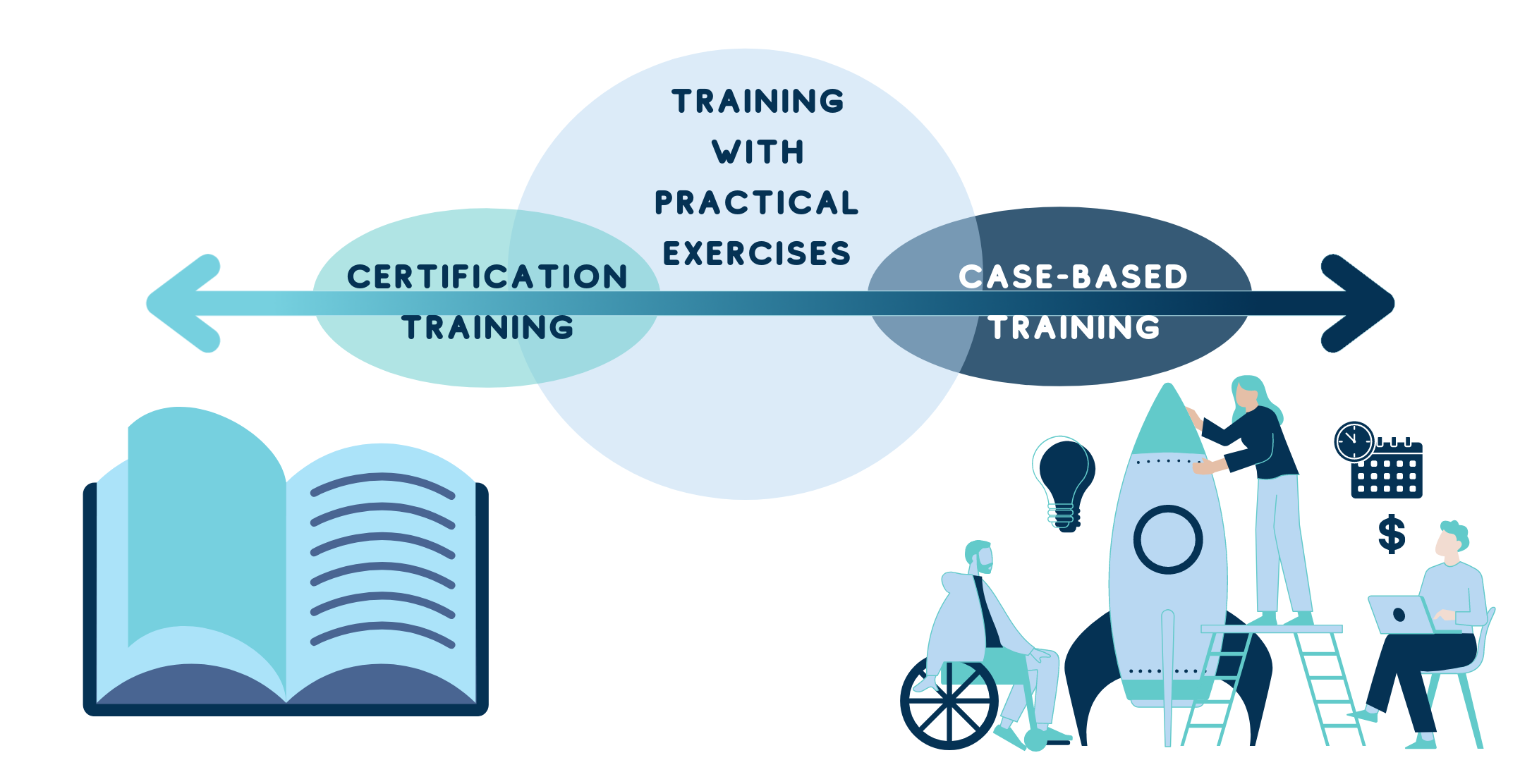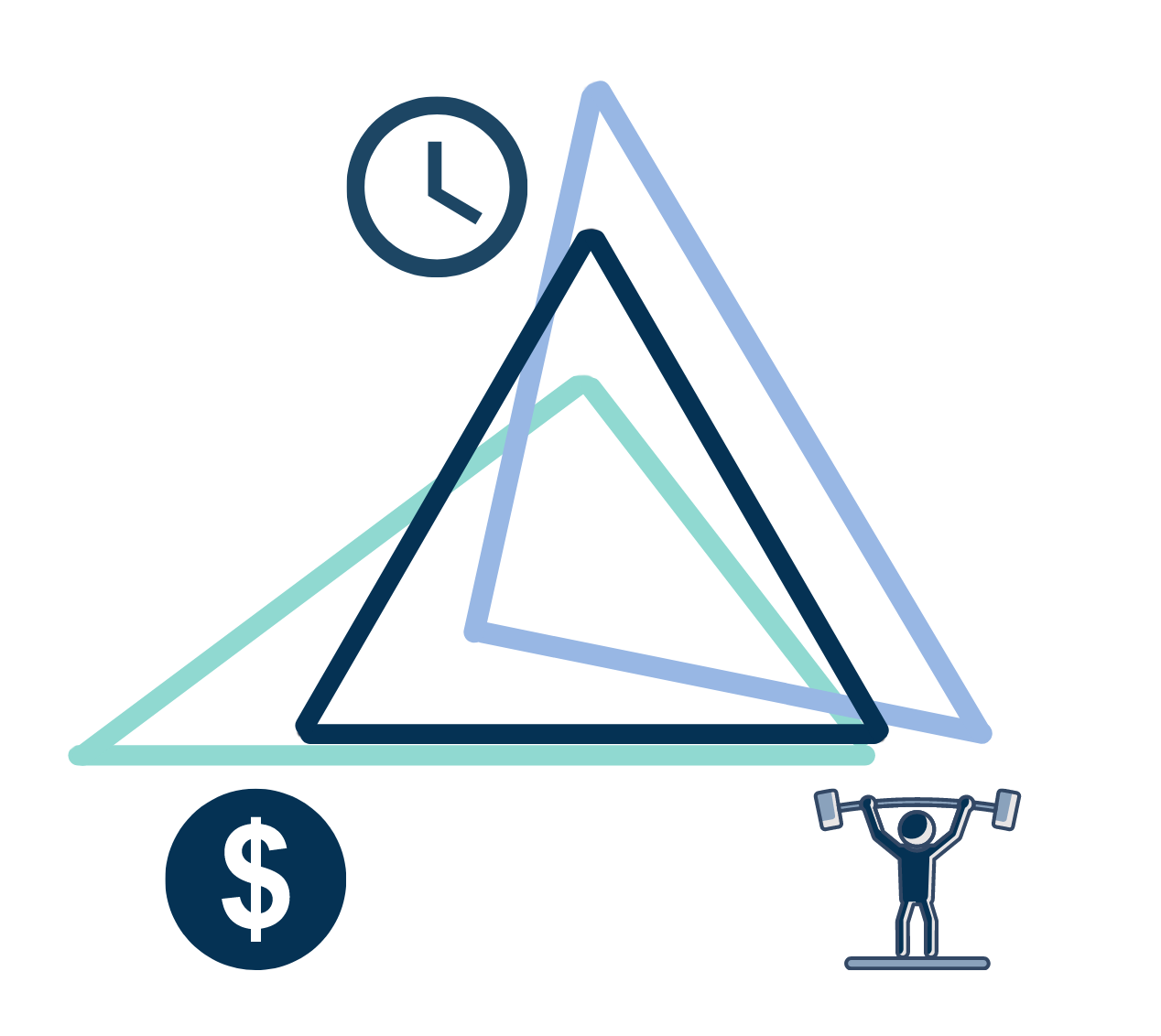Chart Your Development Trail
Today’s speed of changes and a life-tempo open for many people new development horizons. At the same time, it requires continuous learning and upskilling. If a decade ago an employee with a learning aptitude could fully rely on an employee development strategy of his/her company to keep an appropriate level of competencies and to be fit for a job, in a modern world this strategy is outdated and no longer yields outstanding results. It is time to take a leading role for personal development into your own hands. Sounds great and promising, but the necessity of making choices in a vast variety of learning and development options might hack to death this idea even for a highly motivated person.
Being for a long time responsible for learning and talent development within a company and working on a side of learning providers, I would like to share some tips on how to choose appropriate activities in line with your development strategy. As an illustrative sample, I have selected a project management functional area.
Step 1. Define your learning need
This is one of the most essential steps that is tightly linked to your learning motivation and internal goals. I see the following major categories of needs:
- certification: formal recognition;
- knowledge: learning something new, closure of knowledge gaps, skills’ practice;
- networking: informal recognition and fun;
- any combination of the above mentioned.
To fulfil this step, you have to answer two questions: What do I want/need to get as a result? Why do I want/ need it?
For example: “I need to get a PRINCE2 certification because this is a requirement to lead strategic projects in my company.” “I want to get a PMI certification because I want to structure my knowledge and experience according to this methodology and to boost my PM-career.”
“I need to learn the basics of project management to fulfil my current working task more effectively.” “I want to refresh my knowledge, learn something new to be prepared for bigger tasks/projects.”
“I want to extend my professional network, meet competent people and receive feedback, that might help to highlight gaps in my knowledge and skills.”
Step 2. Consider learning alternatives
As soon as the learning purpose is defined, it is time to consider different alternatives, their pros and cons, and to decide on preferable ones.
If your target is a specific certification, the first step is to check pre-requisites and mandatory requirements to be eligible for an application for certification. Usually, this information is available on the website of the certification organization. Some certification bodies allow an application for certification through their authorized training providers only and after a mandatory completion of one of their certification trainings. Here, you have fewer learning options to choose from, and the principal focus is to be shifted on a selection of a training provider. Other certification organizations do not have these strict requirements. In this case, you can directly apply for certification and, on the one hand, have more flexibility in making learning choices, on the other hand, you have to take full responsibility for a preparation process and a selection of learning methods, sources, and providers.
 There are two main categories of preparation methods: self-study and guided learning. Self-study embraces activities like reading an official methodology manual, supporting narratives, and plenty of exam preparation guides; practicing on a variety of free tests; reading and watching tips on how to pass exams, etc. Self-study is a valuable supplement for any learning activity and for some people it might be the preferable and most effective way of learning. However, for many people, it is difficult to stay focused on a narrowed area of a certification preparation, to avoid puzzling by a methodology guide, to separate the wheat from the chaff in picking out the right content, and not to drown in the information ocean. In this case, guided learning offered by different training providers might be a durable option.
There are two main categories of preparation methods: self-study and guided learning. Self-study embraces activities like reading an official methodology manual, supporting narratives, and plenty of exam preparation guides; practicing on a variety of free tests; reading and watching tips on how to pass exams, etc. Self-study is a valuable supplement for any learning activity and for some people it might be the preferable and most effective way of learning. However, for many people, it is difficult to stay focused on a narrowed area of a certification preparation, to avoid puzzling by a methodology guide, to separate the wheat from the chaff in picking out the right content, and not to drown in the information ocean. In this case, guided learning offered by different training providers might be a durable option.
On the learning market, there are two categories of providers offered learnings as a certification preparation: training providers authorized by a certification organization and the rest. Authorization means that content and a methodology of an offered learning are met minimum quality requirements set by an organization (i.e. PMI, IPMA, Axelos, etc.) for its certification’s training, and knowledge after this learning is to be enough to pass a certification exam. In other words, authorization partially transfers the risk of poor quality of a training product to a certification organization, and you might notice it in a training price. Often differences in learning approaches, delivery methods, a focused content selection, and provided exam-tips between an authorized and a skilled non-authorized provider are not remarkably diverse.
The primary purpose of any certification training is preparation for passing a certification exam. Attending it, you should expect:
- basic explanations of the selected methodology of project management and rational guidance through the methodology manual and standards;
- highlighting of critical areas and additional specific topics beyond the methodology guides to be familiar with;
- an explanation of logic, criteria, a structure, and an organization of a certification process;
- hints and tips on how to fill in an application form, to deal with tricky questions, and to wisely distribute time during your exam;
- recommendations on frameworks/ processes/ structures/ formulas/ schemas, that must be memorized;
- a solid practice in answering demo exam-questions, etc.
If your development focus lays more likely in knowledge and practice areas than obtaining one of the recognized certifications in project management, the variety of possible learning alternatives and training offers goes far beyond certification trainings.

In addition to self-study options, there are plenty of MOOCs and learning courses offered by universities, individual and group offers of project management coaching, on-demand learnings, masterclasses and development offers in professional worldwide communities like PMI-community, OpenSAP, and many other small communities established and moderated by PM-training providers. Different combinations of these alternatives are powerful elements of the professional development of a project manager.
It is worth highlighting guided learning activities as essential elements of a personal development portfolio that create a learning experience to accelerate the acquisition of desired knowledge and skills. Training providers offer diverse learning products in different formats: from self-paced online learning to classroom trainings with a lot of intermediate combinations like online & classroom module programs, online self-paced & interactive sessions, webinars, and many others. Applying a proper instructional design a skilled training provider delivers high-quality results for any learning format. Therefore, for a training participant, a learning format is rather a subject of personal preferences than a differentiator of training’s quality.
From my point of view, the core difference between available on the market trainings lays in a proportion of theoretical knowledge and skills’ practicing embedded into a training’s concept.

For example, a certification training inclines to the theoretical extreme, while most trainings tend to be in the middle on this continuum combining theoretical parts and supporting practical exercises. A limited number of premium programs designed around a complicated practical case as a load-bearing element is shifted to the practice extreme. These programs aim at advanced skills training. They incorporate only the ultimate necessary and very condensed theoretical aspects of project management and mainly focus on learning by doing.
To strengthen a long-lasting effect of guided learnings, a lot of training providers offer to join their private or public communities and alumni groups. Usually, professional networking is a great training follow-up as well as an intrinsically valuable development activity. There are a lot of possibilities for professional networking from the local to global levels by attending and contributing to a variety of professional communities, dozens of Meetup groups, social projects and initiatives, conferences, forums, and platforms.
Step 3. Set selection criteria
In order to choose appropriate development activities, the selection criteria should be set. Besides personal preferences to one or another learning alternatives it is worth to decide on investments and answer on the three questions:
How much money do you ready to invest into your professional development?
How much time do you ready to invest?
How much effort do you ready to invest?
The interdependencies among these three parameters can be illustrated by the ‘golden triangle’ technique. There is the optimal combination of time, budget, and effort to achieve the set development target. Varying the parameters, you can influence a triangle’s shape, but not its area. In other words, if you decrease one parameter, this change is compensated by a significant increase of one of the rest two parameters or moderate increases of both.
 For example, if you need to reduce time in acquiring new knowledge and skills, this reduction can be done by increasing a development budget, i.e. to attend a training instead of time-consuming self-study and networking. If you want to reduce your budget, you have to be prepared to invest more time and effort in learning, i.e. looking for free webinars, free masterclasses, reading books, volunteer in a community project instead of attending an expensive training.
For example, if you need to reduce time in acquiring new knowledge and skills, this reduction can be done by increasing a development budget, i.e. to attend a training instead of time-consuming self-study and networking. If you want to reduce your budget, you have to be prepared to invest more time and effort in learning, i.e. looking for free webinars, free masterclasses, reading books, volunteer in a community project instead of attending an expensive training.
As soon as your personal selection criteria are defined, listed, prioritized and weighted, they are ready to apply to all possible learning alternatives. As an output of this step is to be a short-list of learning and development options to work with.
Professional development is an exciting and fruitful area, which requires standing focus and attention to stay on track. Because of high resilience to possible process mistakes and imperfections, it is never too late to apply corrective actions and to move forward to inspiring results on the way of climbing to the self-actualization level.
Read this article on LinkedIn

